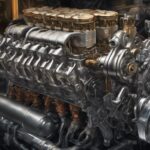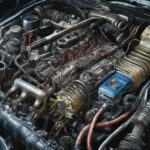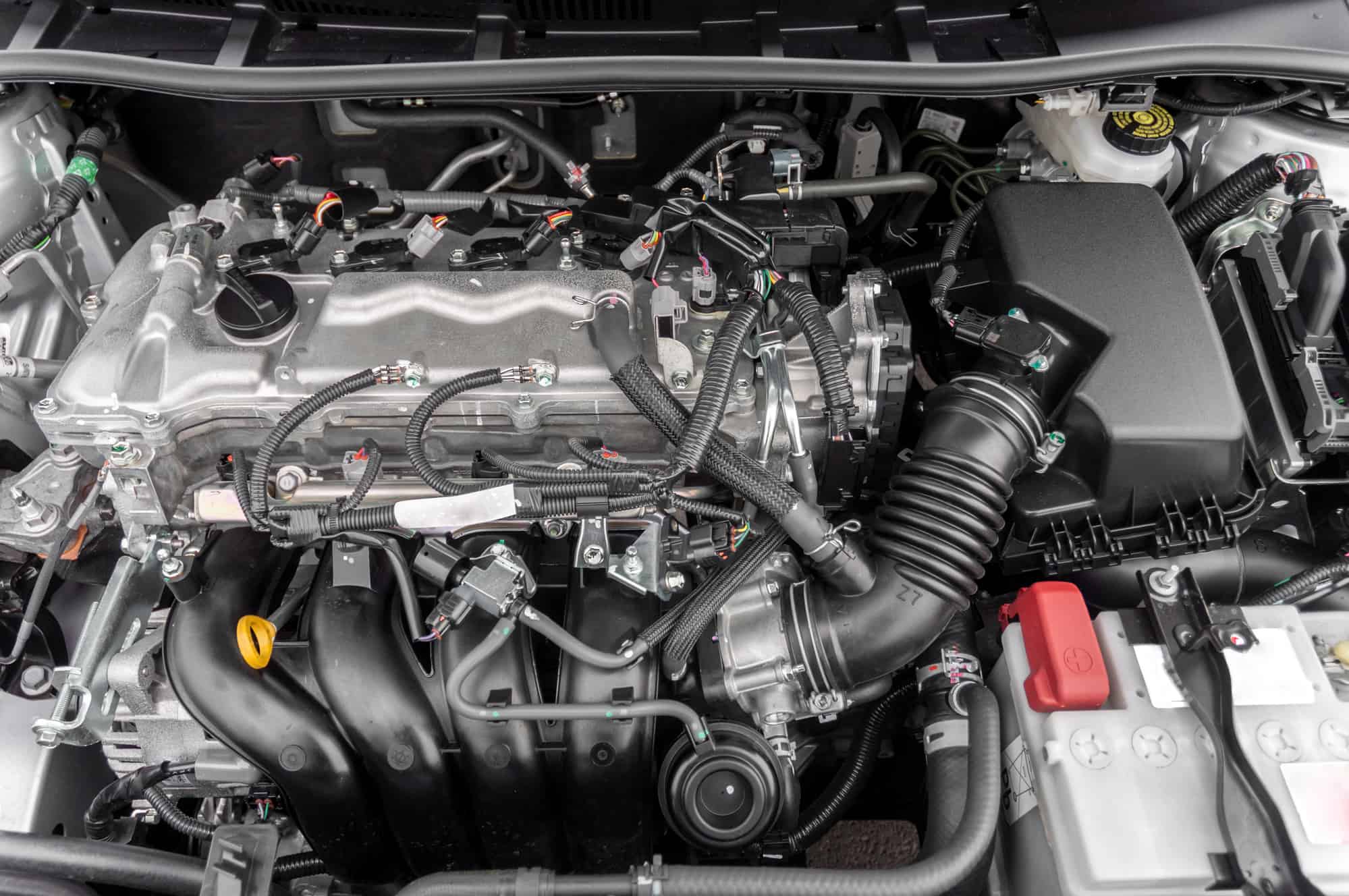If your car is not running as well as it should and sometimes doesn’t start at all, then there may be a problem with the MAP sensor.
The engine trouble code P0106 can also occur when there are MAP sensor problems, but what exactly does P0106 mean?
As a general rule, OBD-II trouble code P0106 Manifold Air Pressure (MAP) Barometric Pressure Sensor Electric Circuit Output Range and Performance Problem is triggered by an out of range voltage reading from the MAP sensor.
This is usually caused by a MAP sensor that has failed, is dirty or there has damage to its wiring or connector.
What can cause a P0106 code?
The OBD2 engine code P0106 is stored in memory when the Electronic Control Unit (ECU) senses an erratic value on the Manifold Absolute Pressure/Barometric Pressure (MAP/BARO) sensor signal.
The MAP/BARO sensor is in charge of reporting to the ECU the engine vacuum as well as the barometric pressure.
Engine vacuum and barometric pressure are important values that help the ECU calculate the actual engine load when the engine is running.
The ECU takes many decisions based on the engine load like spark timing advance and fuel delivery compensation (including altitude compensation).
Modern vehicles are equipped with Electronic Control Units that are constantly saving typical values of all sensor signals. Saved values are used as a reference during diagnostic routines.
The P0106 code is recorded when the ECU detects a significative variation in the voltage from the expected values coming from the MAP sensor.
7 Symptoms Of Trouble Code P0106
The most common symptoms of data trouble code P0106are:
- Check Engine Light (CEL) lit.
- Difficulty during engine start, in few cases even a no start condition.
- Poor fuel economy.
- Rough idle.
- Gas smell from the exhaust pipe.
- Engine misfires.
- Possible smoke from the exhaust pipe.
What Causes Trouble Code P0106?
The most common causes of data trouble code P0106 are:
- Damage to MAP sensor wiring (open, shorted, burnt)
- Damage to MAP sensor connector (loosely, corroded, disconnected or bent pins)
- Dirty or clogged MAP vacuum hose
- A vacuum leak on the MAP sensor hose and/or intake manifold.
- A vacuum leak in the EGR valve
- A failed MAP sensor
How To Diagnose Trouble Code P0106
For the purpose of this article, it’s assumed that you have a basic knowledge of safety precautions while working on your vehicle.
Always refer to the appropriate OEM literature when possible. Original manufacturer diagnostic procedures should always have precedence over a generic workflow.
That said, let’s start the diagnostic process!
1. Preliminary steps
To discard a possible intermittent DTC condition, you’ll need to clear the ECU memory and complete a driving cycle.
- Read data trouble codes and take note of them.
- Clear data trouble codes memory.
- Perform a driving cycle (at least 5-10 minutes).
If the Check Engine Light stays off then you may have an intermittent problem. If the light lit during your driving cycle then continue with the diagnostic process.
2. Visual Inspection
> MAP sensor condition: to inspect the MAP/BARO condition you will need to remove it from the vehicle.
Usually, the Manifold Absolute Pressure sensor is directly placed on the intake manifold or near it (when is using a vacuum hose). Check for water, fuel, oil or dirt on the sensor hose (if equipped) and the sensor itself.
Replace the hose as necessary. Any kind of liquid residues is a bad symptom for the MAP.
> MAP sensor wiring and connector: perform a meticulous visual inspection of the Manifold Absolute Pressure sensor wiring and connectors.
Look for burnt, damaged, corroded or deteriorated wires, also unplug the sensor and look for bent terminal pins, loosely connections, corrosion or any other possible indication of a bad connection.
> Vacuum hoses: perform a meticulous visual inspection of all vacuum lines, including MAP sensor, PCV, brakes vacuum booster, fuel pressure regulator, etc.
Also, check the air intake hose looking for any sign of deterioration or leak. When the MAP/BARO sensor is installed directly on the intake manifold it uses a rubber o-ring type seal. Check its condition and replace as necessary.
> Exhaust Gas Recirculation valve inspection: perform a thorough inspection of the EGR valve exterior, tubing, and connections. Look for possible exhaust leaks in the EGR gasket and connections.
Replace the gasket and/or EGR valve if necessary.
> PCV valve inspection: remove the PCV valve from the vehicle and check its condition. Replace as necessary.
Fix any wiring problem before continuing.
3. Electrical Tests
> MAP sensor electrical tests: using the appropriate OEM literature, check the ground, sensor signal, and the reference voltage of the MAP/BARO. Reference voltage should be greater than 4.5V.
Repair the circuit as necessary.
4. Scan Tool Tests
> Manifold Absolute Pressure sensor operational test: depending on your vehicle and automotive scanner, you should be able to put on screen the actual MAP/BARO value.
The value may be expressed on voltage or pressure units (in Hg or kPa). On idle without any accessory load, the normal vacuum value should be in the vicinity of 17 inHg (57 kPa).
Engine vacuum should drop briefly during sudden acceleration and then increase. On the other hand, during deacceleration vacuum should increase until it stabilizes at idle.
Can a System Gross Leak Evaporative Emission Cause a Manifold Air Pressure Sensor Electric Circuit Output Range and Performance Problem?
Yes, a system gross leak evaporative emission can result in trouble code P0455 OBDII. This means that the manifold air pressure sensor electric circuit output range and performance may be affected, leading to potential issues with fuel efficiency and engine performance. It’s important to address this issue promptly to avoid further complications.
How To Repair Trouble Code P0106
Depending on the diagnostics results you may need to do the following:
- Repairing the MAP/BARO wiring and/or connectors.
- Repairing an intake manifold leak
- Repairing an EGR leak
- Replacing the MAP/BARO
- Replacing the PCV
- Replacing the MAP/BARO vacuum hose.
P0106 OBD-II Trouble Code: Summary
- P0106 Technical Definition: MAP/Barometric Pressure Circuit Range Problem
- P0106 Meaning: Manifold Absolute Pressure sensor signal is out of its normal range.
- Most common cause: Dirty or bad MAP/BARO sensor
- Risks for the engine/driver: Low Get your car checked out as soon as possible
- Emissions severity: HIGH.
The car won’t pass emissions testing
- Estimated repair time: 1 days
- Estimated repair cost: $100-300






